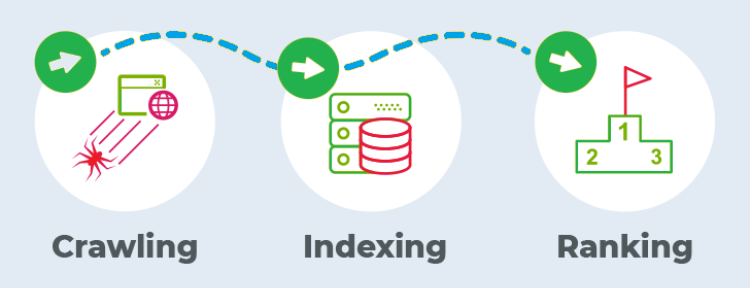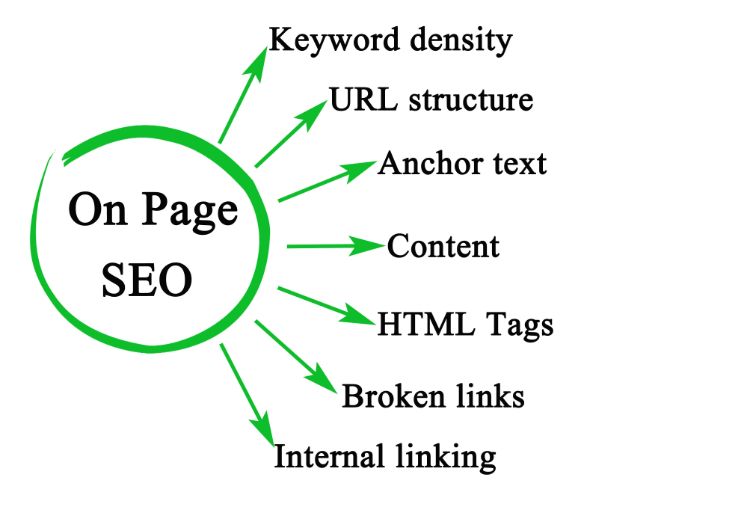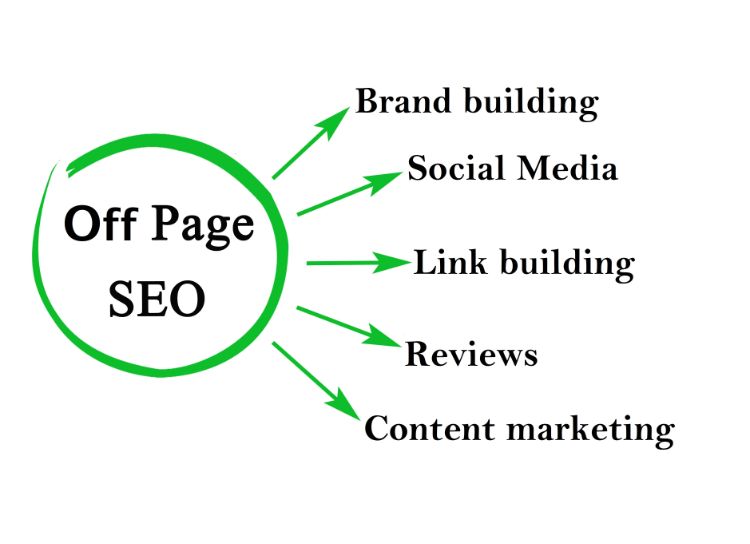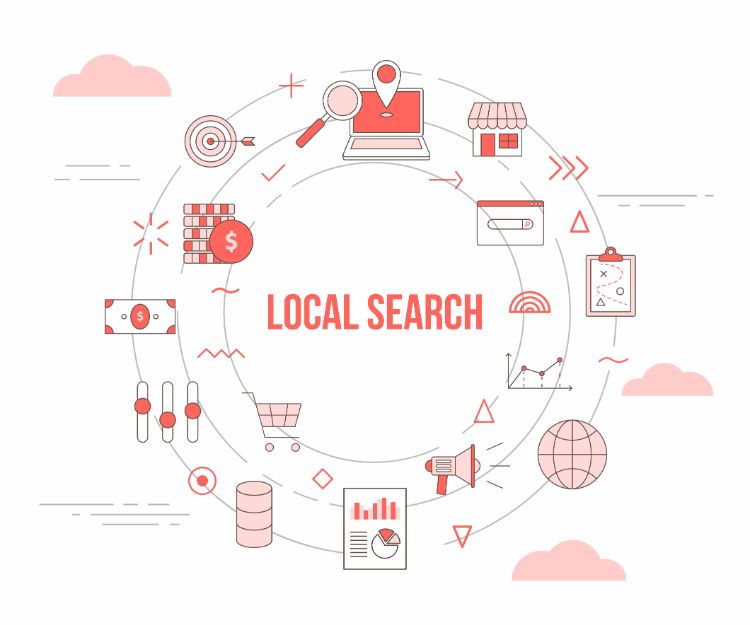To enhance the power of a website even further, SEO is the key.
SEO, or Search Engine Optimization, is a multifaceted and dynamic digital marketing discipline that plays a pivotal role in enhancing a website’s visibility and ranking on search engine results pages (SERPs).
At its core, SEO is about optimizing various elements of a website to align with the criteria and algorithms used by search engines like Google, Bing, and Yahoo.
This optimization involves a range of strategies and techniques, both on-page and off-page, designed to improve a website’s organic (non-paid) search engine ranking.
How does Search Engines function?
Before delving into how SEO works, it’s essential to grasp the mechanics of search engines like Google.
These search engines employ complex algorithms to scan and analyze billions of web pages across the internet. Their primary objective is to provide users with the most relevant and valuable results when they enter a search query.
To achieve this, search engines send out automated programs called “crawlers” or “spiders” to explore websites and collect information about their content, structure, and various other factors.
Once gathered, this data is indexed, allowing the search engine to efficiently retrieve relevant pages in response to user queries.
For example: Google Search Engine works in three stages, and not all pages make it through each stage:

1). Website Crawling
Google downloads text, images, and videos from pages it found on the internet with automated programs called crawlers.
2). Website Indexing
Google analyzes the text, images, and video files on the page, assigns the SEO score and stores the information in the Google index, which is a large database.
3). Serving Website Search Results
When a user searches on Google, Google returns information that’s relevant to the user’s query.
If understanding “How does Search Engines function?” is a challenge, we’ve created an analogy to simplify it for you.
Click here to read the Analogy
Google is a simple creature in that it just wants to provide the best answer to a end user’s question, from a well respected source. How hard can that be?
Imagine your boss asks you to get information on Football in the 19th Century. They give you no more background than that. So, you head to Library and you start looking at books.
You finally narrow it down to two books: the first book is written by a University history teacher, 40 pages long. The second is a 5-inch thick encyclopedia of Football in 19th Century, written by the British Museum.
Without knowing more about your boss’s needs, which do you choose? You would probably pick the book that is most likely to answer any question your boss has. Do they want to know about the rules, the uniforms, the champions of the world?
Without knowing the specifics, the safe choice is to get whichever resource has breadth of information on the topic. That way, you can be confident all questions can be answered. This, in almost all cases, will be the big, comprehensive resource from a trusted source.
SEO analogy takeaway: If we are trying to show Google that we have a wealth of information and that we are a trustworthy source, we have to demonstrate it and be the “big book.”
Understanding this fundamental process is the first step in comprehending how SEO strategies and optimizations can impact a website’s visibility and ranking in search engine results.
What are the types of SEO?
There are four distinct types of SEO: On-Page SEO, Off-Page SEO, Local SEO and Technical SEO. Each type of SEO serves a unique purpose, but they often work together to improve a website’s overall search engine visibility and rankings.
A well-rounded SEO strategy typically incorporates elements from all four types to achieve the best results in terms of organic traffic and online visibility.
In order to have better SEO score to gain more exposure and build credibility, there are several things you have to do for your website.
Let us explain to you the basics of SEO.

On-page SEO revolves around optimizing individual web pages to improve their search engine rankings. This includes optimizing content, meta tags, headings, images, and other HTML elements. On-page SEO ensures that your website’s pages are not only engaging for users but also well-understood by search engine algorithms.
On-page SEO facotrs
Here are some key on-page SEO factors to consider:
High-Quality Content:
Content is king in on-page SEO. Create informative, relevant, and engaging content that addresses the needs and interests of your target audience. Use proper formatting, headings, and subheadings to make content easy to read.
Keyword Optimization:
Research and strategically incorporate relevant keywords into your content, meta titles, meta descriptions, and headings. Avoid keyword stuffing and ensure natural placement.
Meta Tags:
Craft compelling and descriptive meta titles and meta descriptions for each page. These tags serve as your website’s first impression in search engine results.
URL Structure:
Create user-friendly, descriptive, and concise URLs that include keywords when possible. Avoid using long, cryptic URLs with excessive parameters.
Image Optimization:
Compress and optimize images to reduce page load times. Use descriptive alt text for images to improve accessibility and SEO.
Internal Linking:
Add relevant internal links to other pages on your website. This helps both users and search engines navigate your site, improving the user experience and SEO.
Page Speed:
Ensure fast loading times by optimizing images, enabling browser caching, and utilizing content delivery networks (CDNs). Google considers page speed when ranking websites.
Mobile Friendliness:
Make your website responsive to ensure it functions and looks good on all devices, including smartphones and tablets. Mobile-friendliness is a ranking factor for search engines.
Structured Data Markup (Schema Markup):
Implement structured data markup to provide additional context to search engines about the content on your pages. This can enhance how your pages appear in search results.
User Experience (UX):
Prioritize user experience by creating a clear and intuitive site structure, improving navigation, and reducing bounce rates. Search engines consider user behavior metrics when ranking pages.
Secure HTTPS:
Use HTTPS to encrypt data transmission and provide a secure browsing experience. Google favors secure sites in its rankings.
Social Media Integration:
Integrate social sharing buttons to encourage content sharing and engagement on social platforms. While not a direct ranking factor, social signals can indirectly impact SEO.
Content Updates:
Regularly update and refresh your content to keep it relevant and current. Fresh content can attract search engine crawlers and engage users.
Canonical Tags:
Use canonical tags to indicate the preferred version of a page when you have similar or duplicate content to avoid duplicate content issues.
User-Generated Content:
If applicable, encourage and moderate user-generated content, such as reviews and comments. These can enhance user engagement and provide fresh content.
Local SEO Elements:
For businesses with a local presence, optimize on-page elements like NAP (Name, Address, Phone) and embed Google Maps for local SEO benefits.
Remember that on-page SEO is an ongoing process, and continuously monitoring and optimizing these factors can help improve your website’s search engine rankings and user experience over time.
What is Off-Page SEO?

Off-page SEO focuses on activities conducted outside of your website to improve its authority and credibility. This primarily involves building high-quality backlinks from other reputable websites. The quality and quantity of these backlinks play a crucial role in search engine ranking.
Off-page SEO facotrs
Here are some key off-page SEO factors to consider:
Backlinks:
High-quality and authoritative backlinks (links from other websites to yours) are a significant off-page SEO factor. Focus on acquiring natural, relevant, and reputable backlinks. Avoid spammy or low-quality link-building practices, as they can harm your rankings.
Link Quality:
The quality of the websites linking to yours matters. Backlinks from authoritative websites in your industry or niche carry more weight than those from unrelated or low-quality sites.
Link Diversity:
Diversify your backlink profile by obtaining links from various sources, including blogs, news websites, social media, and forums. A diverse link portfolio appears more natural to search engines.
Anchor Text:
Use descriptive and relevant anchor text when linking to your website from external sources. Avoid over-optimized or keyword-stuffed anchor text.
Social Signals:
Social media activity, such as shares, likes, and comments, can indirectly impact SEO. While social signals are not direct ranking factors, they can contribute to increased visibility and traffic.
Brand Mentions:
Online mentions of your brand, even without a direct link, can improve your online presence. Monitor and encourage brand mentions across the web.
Guest Blogging:
Contributing guest posts to reputable websites in your industry can help you establish authority and build backlinks. Ensure that your guest posts offer valuable content.
Online Reviews:
Positive reviews on platforms like Google My Business, Yelp, and industry-specific review sites can improve your local SEO and credibility.
Forum and Community Participation:
Engage in relevant online forums and communities by answering questions and providing valuable insights. Include your website link in your forum profile, if allowed.
Influencer Outreach:
Collaborate with influencers or industry experts to gain exposure and backlinks. Influencer partnerships can expand your reach and boost your online authority.
Content Marketing:
Create high-quality, shareable content that naturally attracts backlinks and social shares. Promote your content through outreach to increase its visibility.
Broken Link Building:
Identify broken or outdated links on other websites in your niche and offer to replace them with links to your relevant content.
Local SEO Citations:
Ensure your business information is consistent across online directories and listings. Accurate NAP (Name, Address, Phone) information is vital for local SEO.
Press Releases:
Distributing well-crafted press releases about your company’s significant news or events can lead to media coverage and backlinks from news outlets.
Brand Authority:
Establish your brand as an authority in your industry by consistently producing valuable content, participating in industry events, and sharing your expertise.
Off-page SEO is an ongoing effort, and building a strong off-page SEO strategy takes time. By focusing on these factors and adhering to ethical and high-quality practices, you can enhance your website’s online presence and improve its search engine rankings.
What is Local SEO?

Local SEO is essential for businesses that cater to a specific geographic area. It involves optimizing your online presence to appear prominently in local search results, such as Google Maps. This includes setting up a Google My Business profile, acquiring local citations, and encouraging positive online reviews.
What is Local SEO?
Here are some key local SEO factors to consider:
Google My Business (GMB) Optimization:
Claim and optimize your Google My Business listing. Ensure that your business information, including name, address, phone number (NAP), and business hours, is accurate and up to date.
Local Keyword Research:
Research and target local keywords relevant to your business, products, or services. Incorporate these keywords naturally into your website content, meta tags, and GMB listing.
Online Reviews:
Encourage satisfied customers to leave reviews on your GMB listing and other review platforms like Yelp, TripAdvisor, or industry-specific directories. Respond to reviews, both positive and negative, professionally and promptly.
Local Citations:
Ensure consistent NAP information across online directories, local listings, and social media platforms. Citations from reputable sources can boost your local SEO.
Website Localization:
Optimize your website for local search by including location-specific keywords and creating location-specific landing pages. Ensure your contact information is prominently displayed.
Local Link Building:
Acquire local backlinks from local organizations, businesses, and relevant local websites. Collaborate with local influencers and industry partners to build local authority.
Mobile Optimization:
With the increasing use of mobile devices for local searches, ensure your website is mobile-friendly and loads quickly on smartphones and tablets.
Schema Markup:
Implement schema markup (structured data) on your website to provide search engines with additional information about your business, such as business type, hours, and customer reviews.
Local Content:
Create content that caters to local interests, events, and news. Showcase your involvement in the local community, which can help improve your local relevance.
Local Landing Pages:
If your business has multiple locations, create individual landing pages for each location with unique NAP information and relevant content.
Google Posts:
Utilize Google Posts to share updates, events, offers, and other relevant information directly on your GMB listing.
Local SEO Audit:
Regularly audit your local SEO efforts to ensure consistency and accuracy across all platforms and listings.
Local Maps Optimization:
Optimize your presence on mapping services like Google Maps. Ensure your location is accurate, and encourage customers to leave reviews and photos.
Voice Search Optimization:
Optimize for voice search by incorporating natural language phrases and questions that local users might ask.
Local Social Media Presence:
Maintain an active presence on local social media platforms and engage with the local community. Share updates about local events and promotions.
Local SEO is an ongoing process, and staying consistent with these factors can help your business improve its visibility within your target geographic area, attract more local customers, and enhance its overall online presence.
What is Technical SEO?

Technical SEO is about optimizing the technical aspects of your website to enhance its crawlability and indexability by search engines. This includes optimizing site structure, improving page load speed, securing the site with HTTPS, and creating XML sitemaps. Technical SEO ensures that search engine bots can efficiently navigate and understand your website.
Local SEO facotrs
When a user searches on Google, Google returns information that’s relevant to the user’s query.
Here are key technical SEO factors to consider:
Website Speed:
Page load times significantly impact user experience and SEO rankings. Optimize your website’s speed by compressing images, enabling browser caching, using content delivery networks (CDNs), and minimizing unnecessary scripts and code.
Mobile-Friendly Design:
With the prevalence of mobile devices, ensure your website is responsive and mobile-friendly. Google prioritizes mobile-first indexing, making mobile optimization crucial for SEO.
Crawlability:
Make sure search engine crawlers can easily navigate your website. Create a clean and organized site structure with an XML sitemap to help search engines index your pages efficiently.
Indexability:
Use the “robots.txt” file and meta robots tags to instruct search engines on which pages to crawl and index and which ones to exclude. Ensure important pages are not set to “noindex.”
HTTPS and Secure Connections:
Secure your website with HTTPS to protect user data and enhance trust. Google considers HTTPS as a ranking factor, and it’s essential for user security.
Canonicalization:
Implement canonical tags to specify the preferred version of a page when duplicate or similar content exists on your site. This helps avoid duplicate content issues.
Structured Data Markup (Schema Markup):
Implement structured data markup to provide additional context to search engines about your content. This can lead to rich snippets in search results.
International SEO:
If your website serves an international audience, use hreflang tags to indicate language and regional targeting to search engines.
XML Sitemap:
Create and submit an XML sitemap to search engines to help them discover and index your site’s pages more effectively.
404 Error Handling:
Customize and optimize your 404 error pages to provide users with a helpful navigation path and prevent search engines from indexing error pages.
Redirects:
Use 301 redirects for permanent URL changes and 302 redirects for temporary ones. Ensure redirects are correctly implemented to maintain SEO value and user experience.
Site Structure:
Maintain a logical site structure with clear navigation menus and internal linking. Use descriptive anchor text for internal links to help users and search engines understand the content’s context.
Pagination:
Properly handle paginated content by using rel=”prev” and rel=”next” tags in the HTML code to indicate page sequence to search engines.
Image Optimization:
Compress and optimize images to improve page load times and user experience. Use descriptive file names and alt text for images.
Server and Hosting:
Choose a reliable web hosting provider with a fast and stable server to ensure your website’s availability and speed.
HTTP Status Codes:
Monitor for and fix crawl errors, such as 404 errors, in Google Search Console to maintain a healthy website.
Technical SEO is a fundamental component of overall SEO strategy. By addressing these technical factors, you can improve your website’s search engine rankings, user experience, and overall online performance.
Regular audits and updates are essential to staying competitive in the ever-evolving digital landscape.
If you find it hard to understand “How does SEO works ?” we have written an analogy to help you grasp the content.
Click here to read the Analogy
Well, SEO can be a bit like dating. If you have ever dated, you know how the process goes. You are looking for someone who appeals to your preferences, and at the same time you are trying to be appealing to someone else with your looks, personality and so on. This is the sort of relationship Google has with websites.
Google is looking for sites that appeal to the algorithm according to a set of standards. And the websites are trying to do their best in terms of looks and content to appeal to Google. There will be a checklist that websites need to tick off before Google accepts them. The checklist is SEO.
Benefits of Search Engine Optimized Website:

A Search Engine Optimized (SEO) website offers several key benefits, including increased visibility in search results, higher organic traffic, improved user experience, enhanced credibility, cost-effective marketing, and the ability to target specific audiences.
It provides measurable results, a competitive advantage, and expands your brand’s reach globally.
SEO is a long-term strategy that adapts to changing trends, resulting in higher conversion rates and data-driven decisions for sustainable online success.
If you in search of a trusted SEO proffesionals, look no further!
“We crafting visually stunning, memorable experiences for the web and interfaces. We build websites that will build your business.”
Elevate your online game with us today!




